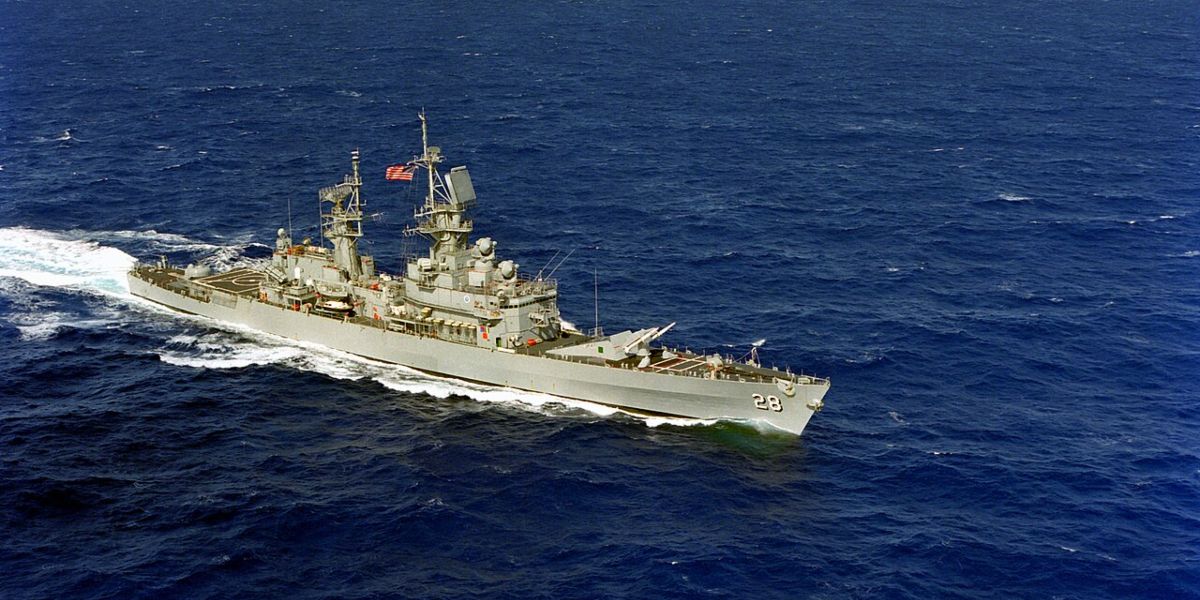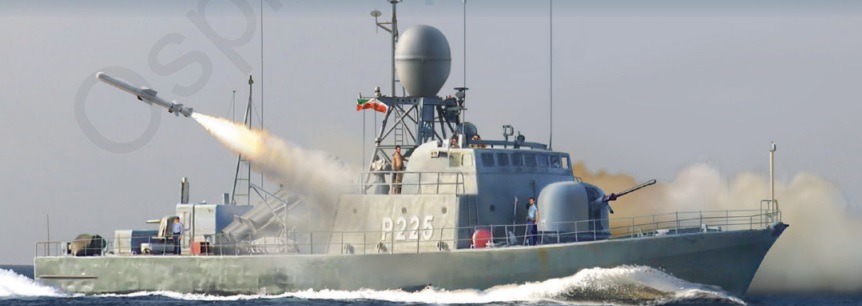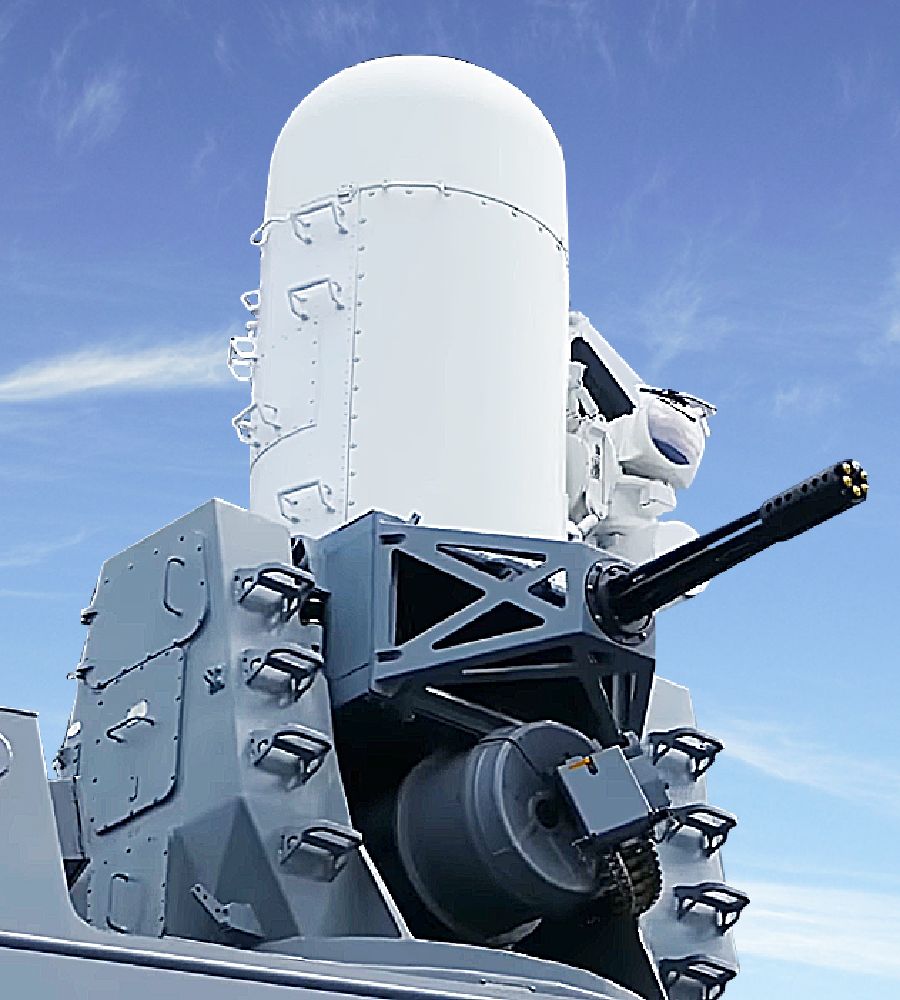Operation Praying Mantis
Operation Praying Mantis was the largest of five major US Navy surface actions since World War II. According to Naval History and Heritage Command, it was the first, and so far only, time the US Navy has exchanged surface-to-surface missile fire with an enemy, and it resulted in the largest warship sunk by the US Navy since World War II. The trigger for the execution of Praying Mantis was the mine strike by USS Samuel B. Roberts on Apr. 14, 1988. The primary tactical objective of the operation was to sink the Iranian frigate Sabalan. The larger objective was to inflict enough pain on Iran to deter them from laying any more minefields in the Arabian Gulf.
The commander of the operation was Rear Admiral Anthony Less, Commander Joint Task Force Middle East, embarked on the command ship USS Coronado (AGF-11), supported in the Gulf of Oman by Battle Group Foxtrot, commanded by Rear Admiral Guy Zeller, Commander Cruiser-Destroyer Group Three, embarked on USS Enterprise (CV-65).
Operation Praying Mantis kicks off
The US Navy commenced Operation Praying Mantis on Apr. 18, 1988 at 0800 when (Surface Action Group) SAG Bravo, consisting of USS Merrill, USS Lynde McCormick, and USS Trenton, started shelling Iranian guns and military installations on the Sassan gas/oil separation platforms (GOSP).
Meanwhile, nine minutes after SAG Bravo had opened fired on the Sassan GOSP, SAG Charlie, made up of USS Wainwright, USS Simpson, and USS Bagley, targeted the Sirri-D GOSP.
Iran response
In response to the US attacks on the oil platforms, the Islamic Republic of Iran Navy (IRIN) Kamen-class missile patrol boat (PTG) Joshan, under the command of Captain Abbas Mallek, was ordered to proceed to the scene, although the orders were ambiguous as to what exactly she was supposed to do. Approximately three hours later, Joshan was detected closing on SAG Charlie. Captain Chandler (SAG Charlie’s commander and Wainwright CO), on board Wainwright, was well aware from intelligence reports that Joshan was carrying the last operational Harpoon anti-ship missile in the Iranian navy inventory. Chandler later said he would have shot Joshan at 35 miles were it not for the de-escalatory order.

However, as the Joshan and SAG Charlie continued to close at a combined speed of over 50 knots, Wainwright continued to broadcast warnings to Joshan to turn away or be fired upon. Captain Mallek responded on the radio, “I am doing my duty. I am in international waters and will commit no provocative attack.” However, at 13 miles, following yet more warnings, Joshan locked on to Wainwright with her fire-control radar. Chandler issued a last radio warning, “Stop engines, abandon ship, I intend to sink you.” Joshan responded by launching her Harpoon at Wainwright.
A cloud of white smoke
Chandler recalls in the book Harpoon Missile vs Surface Ships US Navy, Libya and Iran 1986–88 by Lon Nordeen;
‘Wainwright was the ship nearest to Joshan as we closed. We reacted very quickly in the wake of Joshan firing at us. The first indication a missile had been launched came from a LAMPS SH-2 Seasprite helicopter, which reported a cloud of white smoke. The senior chief radar operator reported separation [of the solid rocket booster motor from the weapon] and the EW chief reported an emitter. As I said, we had trained for this. Things then went into automatic. The EWs, without order, launched chaff and started the active jamming. I told Simpson we were locked on and gave Capt McTigue the “birds’ free” order to fire his SM-1MR. He fired it immediately. Moments later, we knew Simpson had achieved a hit because Joshan’s radars went quiet.
‘With Joshan having effectively been blinded by the SM-1 hit, I ordered the bridge to steer the ship onto a course that presented the smallest radar aspect to the incoming missile [which, due to its subsonic speed, was still in the air when Joshan was hit by the supersonic SM-1MR] and kept it out of line between the missile and our chaff cloud.

Why the miss?
‘The missile passed very close down our starboard side and, by visual report, through the chaff. Now, why the miss? I surmise one of three things – either the missile malfunctioned, the missile settings were wrong, or the actions Wainwright took were effective. Later, I considered that we might have had some luck, too.
‘How does it feel to have a Harpoon fired at you? Too exciting, and too many things to do and think about. One remarkable thing. As I looked around CIC while the missile was inbound, everyone was bent over with knees flexed, holding on to a fixed object.’
Mk 15 Block 0 Phalanx CIWS
All of the US Navy warships involved in Operation Praying Mantis were fitted with Mk 15 Block 0 Close-In Weapon System (CIWS) Phalanx – the first examples had reached the fleet in 1980, and within five years 400 units had been delivered. The only time it was called into action during either operation was when Wainwright was targeted by a Harpoon fired by Joshan, and the CIWS failed to engage the ASM when it came within range, despite being in auto mode.
Phalanx CIWS fails to shoot down the Iranian Harpoon
‘One of the major concerns following the April 18 clash with Joshan was why did our Phalanx CIWS NOT shoot down the Iranian Harpoon when it was in full auto mode? What happened? I asked my Weapons Officer, who was at my elbow as my TAO, that very question. What we subsequently found out was a huge lesson learned. When you are responsible for weapons systems in a new command, check out the limits on the firing cut-out cams [that protect the CIWS from shooting up its own ship]. We had fired our CIWS numerous times, even in the Persian Gulf, and only a few days before had had a low-level fast aircraft run some tracking passes for us, and all was in order.

Phalanx CIWS incorrectly set firing cut-out cams
‘However, as in all tracking and firing exercises, the missile profiles were flown over the beams of the ship, and none from forward or aft. On investigation and testing, it was discovered that the limits on the CIWS firing cut-out cams had been changed, unbeknown to me and the weapons officer, by one of my predecessors who was concerned some antennae forward might be shot away. Wrong! The engineers who create those limits know what they are doing. That problem was quickly corrected. So, you have the answer – incorrectly set firing cut-out cams.
‘Why did I point the bow at the inbound missile? Training! The three primary reasons were as follows. Firstly, during a session with a tactical training team, the leader asked me where was the ship’s minimum radar cross section. I replied, “bow.” He said, “No, three to five degrees off the bow.” Train, remember. Also, CIWS will engage (supposedly).’
A really bad day for Iran
In response to the Harpoon launch, Simpson fired four Standard missiles in surface-to-surface mode at Joshan and Wainwright fired one. (Although the Standard missile’s anti-air warhead is relatively small, the missile gets to the target extremely fast…and when I was in TAO school in 1982, the instructor hammered that point home.) At least four of the missiles hit Joshan’s superstructure with devastating effect, but not enough to sink the ship.
During Operation Praying Mantis the US Navy destroyed two Iranian surveillance platforms, sank two of their ships, and severely damaged another.
Harpoon Missile vs Surface Ships US Navy, Libya and Iran 1986–88 is published by Osprey Publishing and is available to order here.

Photo by Jim Laurier, PH2 Michael A. Harnar, CWO2 Kenneth H. Brewer / U.S. Navy and Paraxade via Wikipedia

